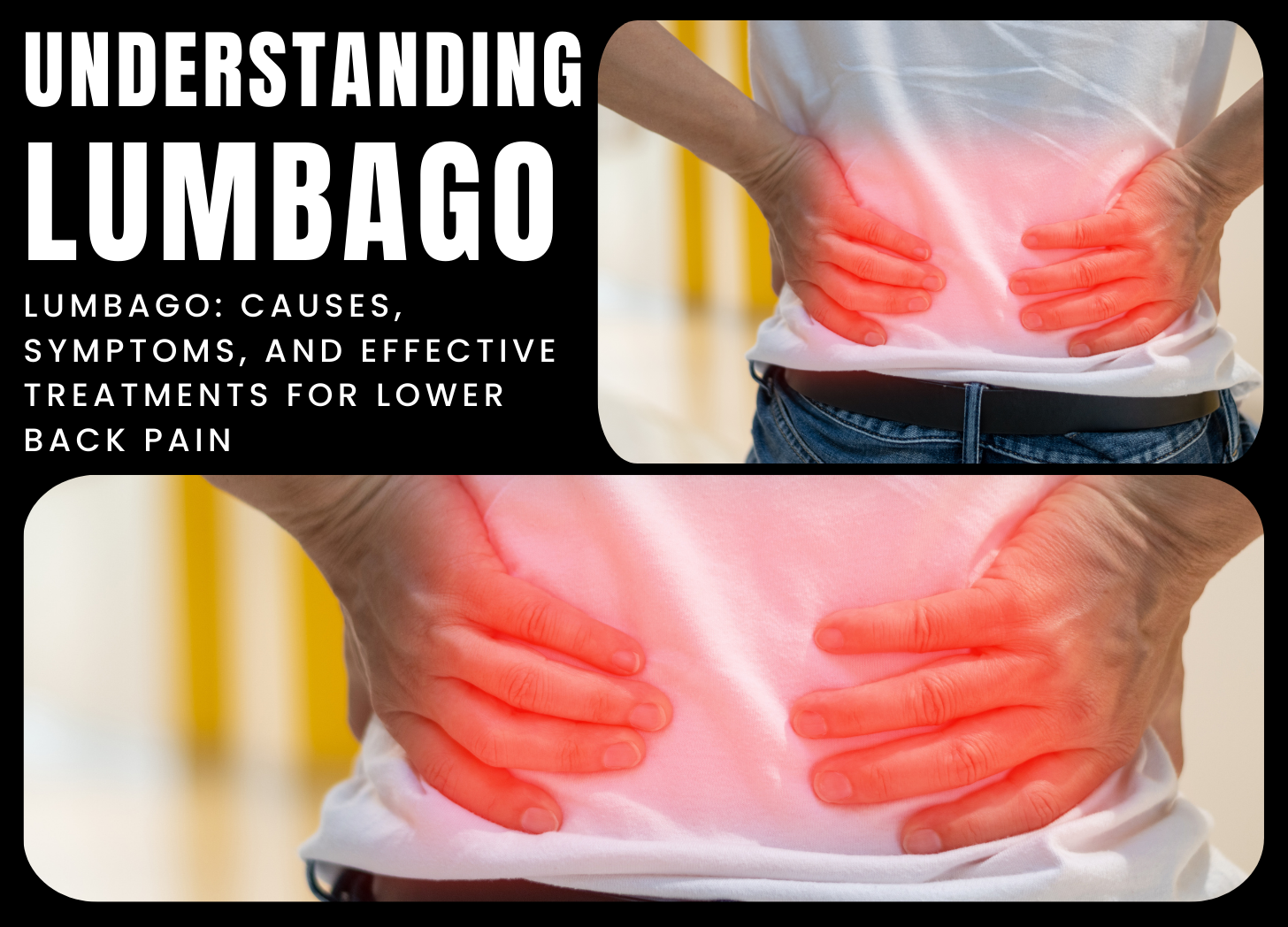Contact Us
Contact Us

Lumbago, often known as lower back discomfort, is a common musculoskeletal disorder affecting millions of individuals worldwide. It is characterized by pain, stiffness, or discomfort in the lower back, typically between the ribs and the pelvis. Lumbago can range from minor, temporary discomfort to severe, unrelenting pain that impairs daily activities and quality of life. While lumbago can be distressing, it is rarely indicative of a serious underlying medical condition and usually resolves with conservative treatment.
Causes and Risk Factors
Lumbago can arise from various factors, including muscle strain or sprain, poor posture, repetitive movements, lifting heavy objects, sudden movements, spinal abnormalities, degenerative changes in the spine (such as osteoarthritis or degenerative disc disease), herniated discs, spinal stenosis, or nerve compression. Risk factors for lumbago include aging, a sedentary lifestyle, being overweight, smoking, and working in jobs that involve heavy lifting or prolonged sitting.
Symptoms
Lumbago symptoms can vary depending on the underlying cause and severity of the condition. Common symptoms include:
Treatment and Management
Lumbago is typically managed with a combination of conservative therapies aimed at pain relief, functional improvement, and recurrence prevention. These treatments may include:
In addition to these treatments, physical therapy can play a crucial role in managing lumbago by providing specific exercises, manual therapy techniques, and guidance on proper body mechanics and posture. Some individuals may find relief through complementary therapies such as acupuncture, massage therapy, or chiropractic adjustments.
Advanced Interventions
In cases of persistent or severe lumbago that do not respond to conservative treatments, further evaluation by a healthcare provider may be necessary. This evaluation aims to identify underlying structural abnormalities or spinal conditions that may require additional interventions such as epidural steroid injections, nerve blocks, or surgery.
Conclusion
Lumbago is a common condition characterized by pain, stiffness, or discomfort in the lower back. While it can be distressing and interfere with daily activities, most cases resolve with conservative treatments focused on alleviating pain and improving function. By understanding the causes, symptoms, and treatment options for lumbago, individuals can take proactive steps to manage their symptoms and prevent recurrence.
References:
Post a Comment